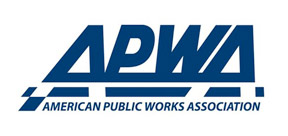Lexington continues strides toward sustainability with Solarize

Lexington, Ky., created a sustainability plan in 2012 and recently updated it with the city’s new sustainability program. At a conference, working with Solarize programs was mentioned, and it was thought to be a good fit as part of the Empower Lexington sustainability plan. The goal of Solarize is to help initiate solar sustainability programs throughout the state of Kentucky. When Jada Griggs, sustainability senior program manager, started in her position, the first step was updating the city’s sustainability plan. After that, she was ready to kick off the new solar plan.
Lexington’s Solarize program was started in 2023 with the Kentucky Solar Energy Society. Limited funding was initially given by the city council. The program is only currently available for county residents and helps to reduce the dependency on the electric grid by making it easier for residents to install solar. The city learned the process of vetting installers and chose one solar installer it thought would work best with the program. A request for proposals was submitted, and then the proposals went through a committee review. The city then chose and recommended the installer on the webpage and media releases. The main target of the program is residential homeowners. However, the program is also open to nonprofits, places of worship and small businesses. Interested parties were then encouraged to fill out an interest form so the city could learn the areas that harbored the most interest, with the possibility of offering a discount rate.
An assessment was then conducted of the home to see if it would be a good fit for solar. The assessment included seeing the amount of sun or shade the home received, if the roof was a good fit and if there was enough space on the roof for solar. If the roof was deemed a good fit for solar energy, the resident’s information was then shared with the installer. Residents received a step-by-step walk-through of the process of installing solar and worked with the installer to choose the best fit for their home. The contract was then between the installer and the homeowner.

“It helped homeowners feel more at ease with the process,” Griggs explained. The city continued to be available to answer any questions and assist with any concerns.
“The first year was even more than I could have imagined,” Griggs stated. “I was blown away. We had quite a bit of response and got a lot of interest.”
Over the two years Lexington has been running the program, there have been 128 solar installs residentially with 120 installs being rooftop and eight battery-powered. While solar energy is a large initial investment, eventually it will pay for itself. The resident just has to wait for 11 to 12 years to see a full payback on the investment. However, a reduction in the homeowner’s energy bill will be seen much more quickly. The solar program also helps to raise property values, lower the resident’s carbon footprint and support local jobs.
Those who have participated in the program have all been thrilled with the difference. One Solarize Lexington participant informed the city, “Thank you, thank you, thank you! My system is up and running. Wow, it is really fantastic. What a wonderful overall experience from beginning to end.”
Empower Lexington is a sustainability plan not just focused on solar, but on all forms of sustainability and resiliency for the community as a whole. While the city plans to continue its solar program, it also wants to determine other ways to reduce climate pollution and achieve net zero. Part of that is also an emissions reduction plan. A greenhouse gas emissions inventory was done in 2022 and 2023, and the city is developing an emissions reduction plan. The city council adopted the Imagine Lexington 2045 plan, which pledges to have net-zero emissions by 2050.
Reduction is not the only key to net zero. Lexington also has a strong tree canopy initiative for planting trees and reforesting bluegrass. Homeowners can pick up native trees to reforest their own yards. The city chooses the right tree for the right location for the most benefit. The city is also working on a So Smart initiative for recycling and composting. If a resident attends a composting workshop throughout the year and lives inside the urban service boundary, they can receive a voucher to help offset the cost of composting. Vouchers are now also beginning to be offered outside of the service boundary. The city has also teamed up with the public bus system to collect 1,000 pounds of plastic bags to create a bench that will be placed at a bus stop.
“There is no small initiative,” Griggs emphasized. “One thing for sustainability is to let every resident know that we can’t do everything, but let’s figure out what we can do and do it. We can’t all get solar, but what can we do? We want to get residents thinking forward about what they may be able to do to help.”
The city of Lexington is also working to increase education for residents when it comes to various types of sustainability. “We also need all the other small things,” she noted regarding moving forward with sustainability. The overall goal is to get residents involved in moving toward greater sustainability.
Next Article: Idaho overpass significantly decreases wildlife-vehicle collisions





